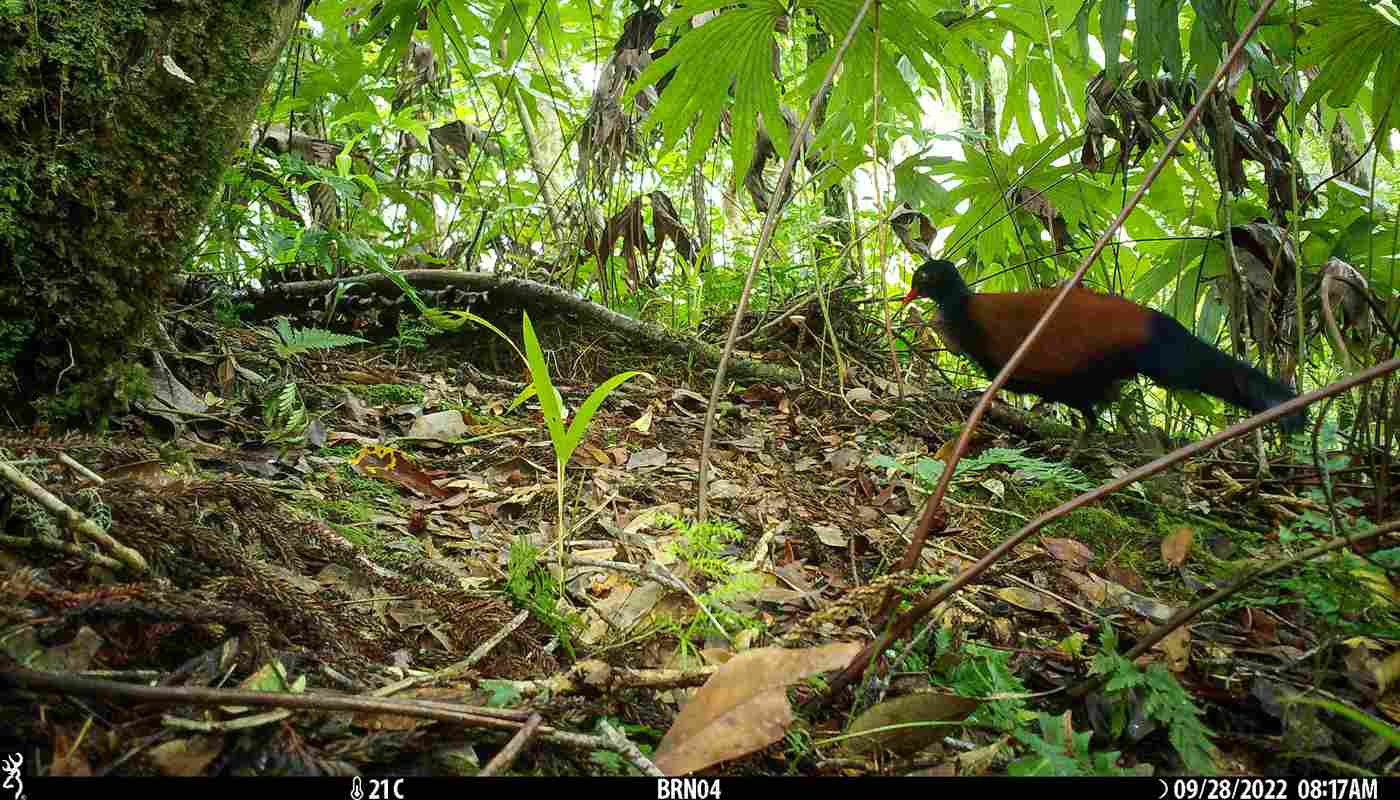
🪶 Scientists find black-necked pheasant pigeon after 140 years
Scientists find black-necked pheasant-pigeon after 140 years of absence. The scientists captured a picture of the bird via a camera trap and described it “like finding a unicorn”.
Share this story!
During a month-long search through the jungle, scientists have found the ground-dwelling black-naped pheasant which hasn't been spotted for 140 years. A camera-trap captured a picture of the bird and scientists described it as “like finding a unicorn.”
The black-naped pheasant hasn't been seen since 1882 when it first was documented to science. The bird is one of the most endangered birds in New Guinea and this reinforces the need to conserve as much of Fergusson Island (the bird's home) which lies off the mainland's east coast.
It was only hours left of the search before it was to be called off when the expedition's co-leader Jordan Boersma was catching his breath on a hillside, while looking through camera trap photos and saw the picture of the pheasant.
“Suddenly I was confronted with this image of what at that time felt like a mythical creature,” Boersma, a postdoctoral researcher at the Cornell Lab of Ornithology, told the Audubon Society. “It was, without exaggeration, the most surreal moment of my life.”
Very little is known about this bird beyond its size, which is about the same as a chicken, and that it has a plethora of rust colored back and shoulder feathers creating a sharp contrast to its black tail and nape.
Good News Network explains that the “chief among the expedition’s assets were the indigenous people of Fergusson Island, whose knowledge of the land was key to making the discovery. In fact, it was in the village of Duda Ununa that a hunter named Augustin Gregory told the researchers of a 3,200 foot high ridge he had seen the bird on.” On the ridge, the camera traps caught two separate black-naped pheasant passing by.
“This is a huge discovery,” Bulisa Iova, an expedition member and acting chief curator of the National Museum and Art Gallery in Papua New Guinea, told Audubon. “I have studied birds for many years, and to be part of this team to discover this lost species is a highlight for me.”
The rediscovery of this bird raises hopes that future expeditions might have similar results. Hopes to find other species, lost to science but known all along to local experts. Asking for local knowledge is key to making an optimistic future come sooner.
Picture: John Mittermeier/American Bird Conservatory via Good News Network
By becoming a premium supporter, you help in the creation and sharing of fact-based optimistic news all over the world.


